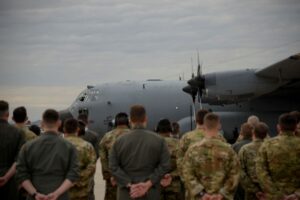
The U.S. Air Force may want to buy an additional 12 EC-37B Compass Call aircraft by BAE Systems and L3Harris Technologies [LHX] to counter threats in the Indo-Pacific. Congressional lawmakers are asking the Air Force whether it could field the aircraft by 2027. The service is planning to field 10 EC-37Bs to replace the EC-130H, which uses electronic attack and counter-information to disrupt adversary communications and navigation and to suppress air defenses. The Air Force accepted the first EC-130H in…














